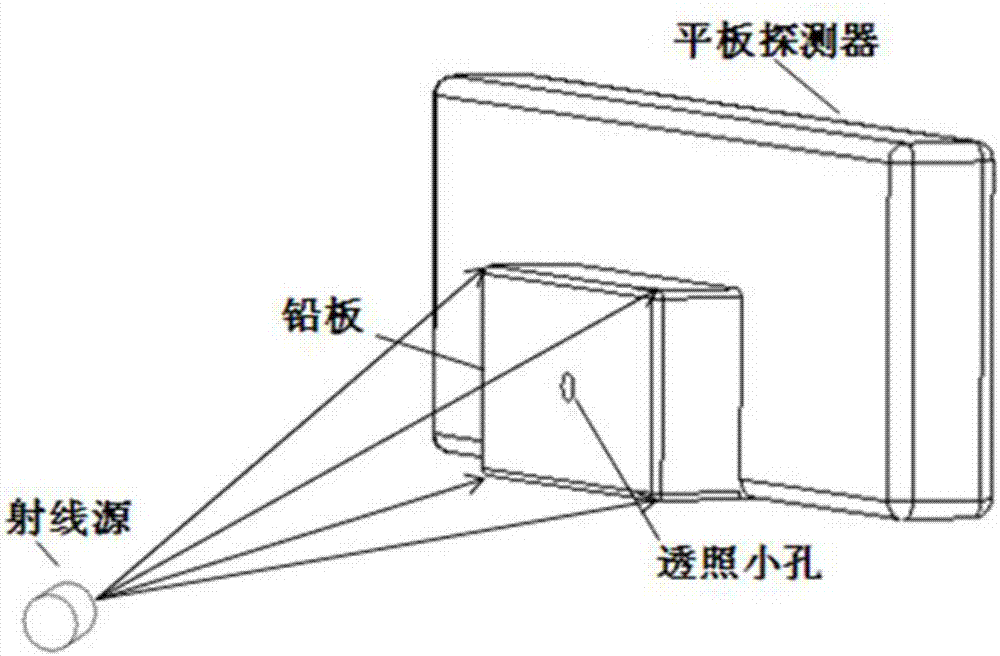Three-dimensional parameter extraction method of internal defect of gas turbine blade based on digital ray
A gas turbine blade and digital ray technology, which is applied in material analysis using radiation, material analysis using wave/particle radiation, and measurement devices, can solve the problems of impenetrable blade penetration, large ray attenuation coefficient, and low detection efficiency. Achieve high efficiency and low cost
- Summary
- Abstract
- Description
- Claims
- Application Information
AI Technical Summary
Problems solved by technology
Method used
Image
Examples
Embodiment Construction
[0050] see figure 1 As shown, the invention discloses a digital ray detection system and a method for quantitatively extracting three-dimensional parameters of internal defects of gas turbine blades based on digital ray. By discretely quantizing the thickness at each pixel with the grayscale of the image, each grayscale value corresponds to a thickness (the dynamic range of the flat panel detector reaches 16 bits, and the obtained discrete thickness is three orders of magnitude smaller than the pixel size). The thickness at each pixel is thus obtained, and based on this and combined with the size of the pixel, the quantitative detection of the three-dimensional parameters of the defect can be realized.
[0051] see figure 2 As shown, the method for quantitatively extracting three-dimensional parameters of gas turbine blade internal defects based on digital ray in the present invention includes the following six steps:
[0052] S1. Determine the linear response range of the ...
PUM
| Property | Measurement | Unit |
|---|---|---|
| diameter | aaaaa | aaaaa |
| diameter | aaaaa | aaaaa |
| diameter | aaaaa | aaaaa |
Abstract
Description
Claims
Application Information
 Login to View More
Login to View More - R&D
- Intellectual Property
- Life Sciences
- Materials
- Tech Scout
- Unparalleled Data Quality
- Higher Quality Content
- 60% Fewer Hallucinations
Browse by: Latest US Patents, China's latest patents, Technical Efficacy Thesaurus, Application Domain, Technology Topic, Popular Technical Reports.
© 2025 PatSnap. All rights reserved.Legal|Privacy policy|Modern Slavery Act Transparency Statement|Sitemap|About US| Contact US: help@patsnap.com



